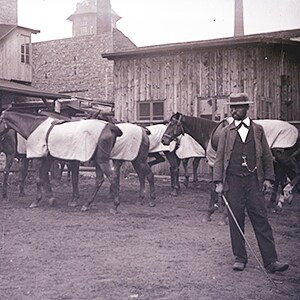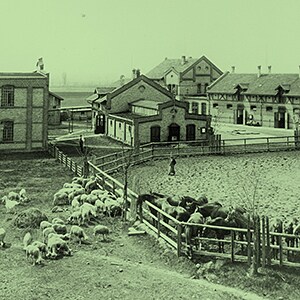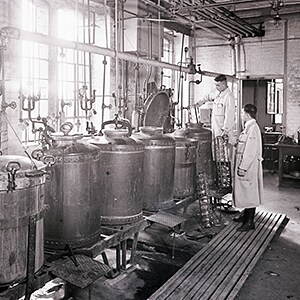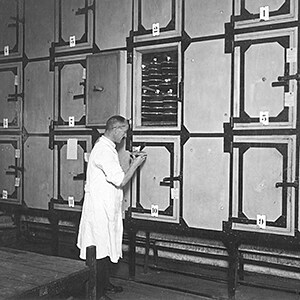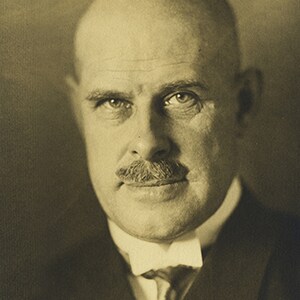
»Behring gold…«
Pediatrician Otto Heubner at the International Congress of Hygiene at Budapest in 1894
Medicine is helpless in the face of infectious diseases until latter part of the 19th century, when intensive bacteriological and immunological research add radically new drugs to the pharmaceutical armamentarium: vaccines, sera and diagnostics. E. Merck, Darmstadt, Germany, is heavily involved in their manufacture from the start. Vaccines make it possible for the first time to prevent infectious diseases by injecting people with a small amount of attenuated pathogen that is not enough to trigger an outbreak but does mobilize the body’s immune system to make the person immune to infection with these pathogens.
Blood serum therapy, whose beginnings date back to Emil von Behring and Paul Ehrlich, is based on a different premise: that the blood serum of immunized animals has the capacity to selectively kill the pathogens to which immunity exists. As early as 1895, one year after launch of the first diphtheria serum, diphtheria mortality declines by more than half in Germany. Tetanus is virtually wiped out as a cause of death following launch of tetanus serum in 1896.
For the first time, serum diagnostic procedures identify the exact pathogens in a diseased organism, thereby forming the basis for targeted treatment. Three of the pharmaceutical and chemical factories in Germany at the time recognize the significance of the new drugs and set up on-site Bacteriology Departments; E. Merck, Darmstadt, Germany, does so in early 1895. Apart from making diphtheria serum and small pox-vaccine, the new department’s tasks include conducting its own research into new biological therapies.
The department grows fast and sets up a branch in Halle/Saale in 1902, where an anthrax serum is developed in cooperation with Professor Georg Sobernheim, who works at the Hygiene Institute there. Large numbers of cattle, horses, sheep, and goats are kept in Halle and Darmstadt to harvest the active ingredients. The facilities produce small pox vaccine, diagnostic kits to detect tuberculosis and typhus; anti-anthrax, anti-streptococcal, anti-pneumococcal and – most importantly– anti-diphtheria serum, dedicating special effort to the latter’s continuous improvement. In 1895, the company launches diphtheria serum in strengths equivalent to 100, 200 and 300 immunization units. Five years later, the company research »propels ahead of its competitors« with the development of a 1,000-strength serum, as it proudly announces.
Not a farm, but rather the Serum department at the Darmstadt site in the early 20th century: The horses, goats and sheep kept there are required for serum production.
Great hopes are pinned to the work of the Bacteriology Department. Medical bacteriology is considered a discipline of the future. Wilhelm Eichholz becomes Head of the Bacteriology department in 1903, Head of the Serum department in 1919, and member of the Board of Directors in 1924 with special power of attorney.
The company's »diphtheria healing Serum«, the outcome of continuous scientific research, contributes to a significant reduction in the diphtheria mortality rate. Trade publications such as the »Süddeutsche Apotheker Zeitung« report on the registration of the product, which is then heavily advertised.

